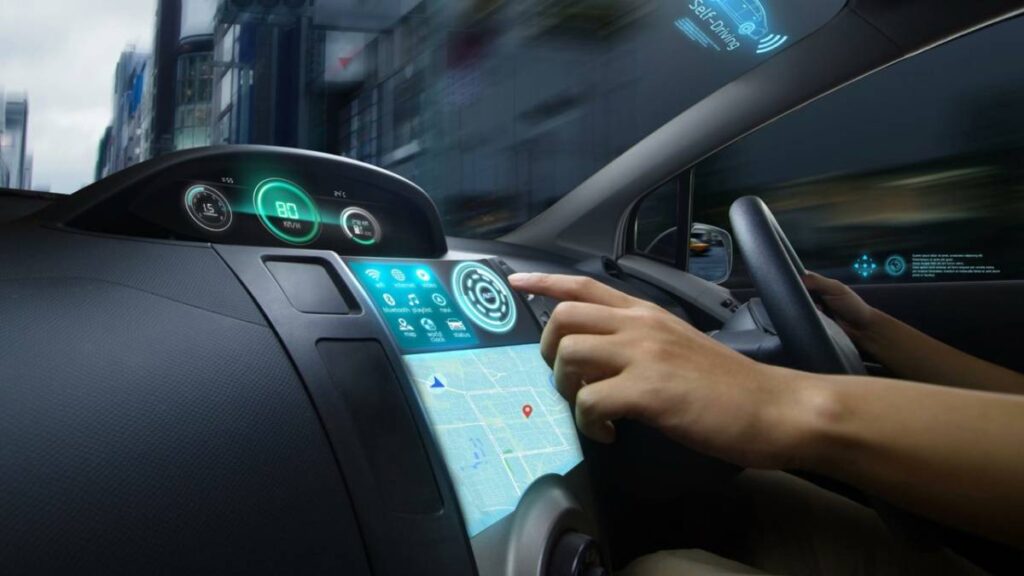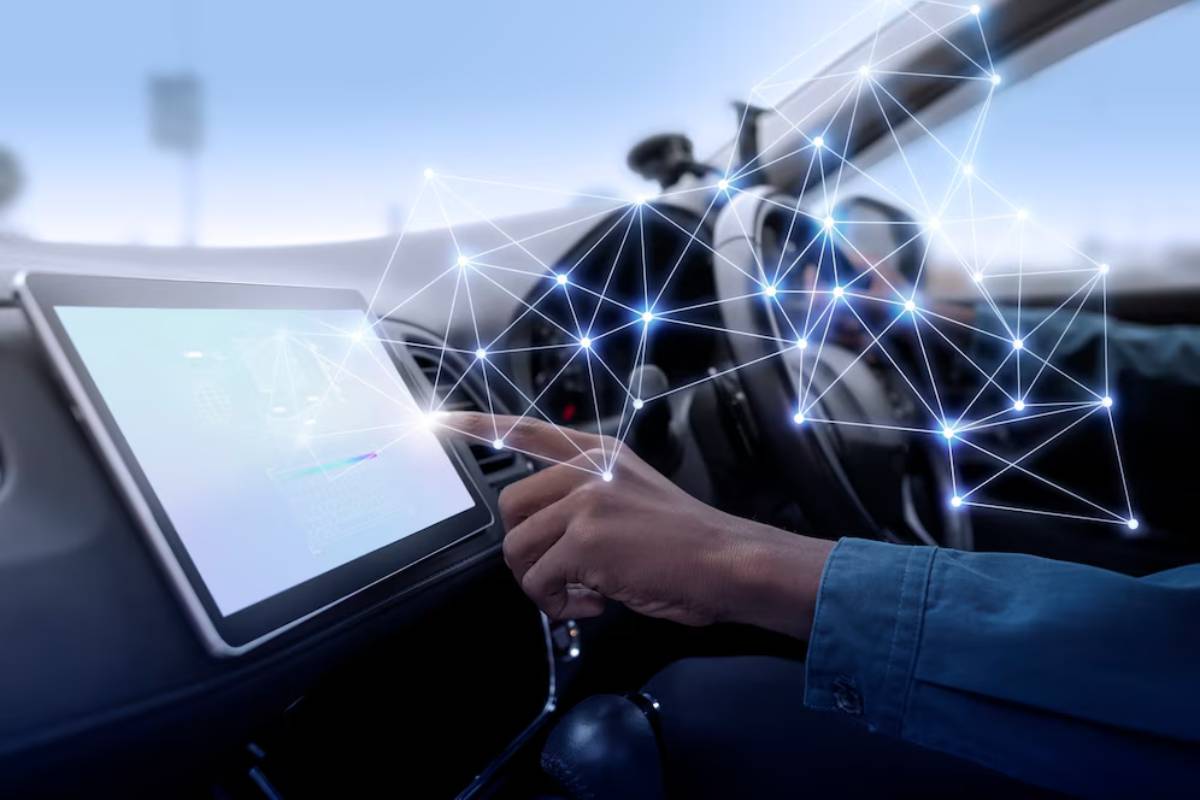The Technology Blog

The Role of 5G in Enhancing Autonomous Vehicle Communication
5G is revolutionizing the technology in many industries including automotive. The enabling of communication between vehicles through the advancement of 5G is becoming increasingly vital as we head towards automobiles with full autonomy. This blog explains the 5G effect on vehicles, smart car networks and autonomous driving.
5G provides ultra-reliable, low-latency communication that’s crucial for autonomous vehicles. This improved vehicle-to-everything (V2X) tech will transform communication between cars and their surroundings. It enhances safety and efficiency and supports a future where autonomous vehicles are part of smart cities.
Key Benefits of 5G for Autonomous Vehicles
Enhanced Connectivity and Communication
5G greatly improves connectivity for vehicles. Its fast data transfer allows self-driving cars to instantly talk to each other and their surroundings. This communication is key for safe operations. It lets vehicles make quick choices using current information.
In a smart car network, vehicles can instantly share data about road conditions, traffic, and hazards. This teamwork boosts safety and optimises traffic flow, reducing congestion and emissions.
Low Latency for Real-Time Decision Making
5G is known for its low latency, crucial for autonomous driving. Latency is the time it takes for data to travel. Low latency for autonomous vehicles lets onboard systems quickly respond to environmental changes.
For example, if an autonomous car sees a pedestrian crossing, it needs to respond immediately. With 5G, these critical decisions happen in real-time, improving safety and responsiveness.
Increased Data Capacity for Advanced Features
5G networks have higher data capacity, allowing for advanced features in autonomous vehicles. It supports sophisticated sensors and cameras, helping with accurate environmental perception.
This capacity enhances advanced driver assistance systems (ADAS), improving safety and comfort. These systems rely on constant data streams. They support features like adaptive cruise control and automatic emergency braking.
Improved Safety and Reliability
Safety is a top priority in autonomous vehicle development, and 5G helps address this concern. Its strong communication helps vehicles share information, such as traffic lights and road signs.
This real-time data exchange helps vehicles anticipate hazards. For example, if a car in front brakes suddenly, following vehicles can receive alerts and adjust their speed to avoid collisions.
Additional Expert Tips & Common Mistakes to Avoid
Best Practices for Implementing 5G in Autonomous Vehicles
1. Teamwork is key for 5G success. Car makers, tech firms, and regulators must collaborate.
Working together can set standards and protocols for safe operations.
2. Infrastructure Investment: Building 5G networks requires significant investment. The public and private sectors must collaborate to build the infrastructure for 5G-enabled vehicles.
3. Focus on Security: With increased connectivity come more cybersecurity risks. Protecting connected vehicles requires strong encryption, secure firmware, and regular updates.
Common Mistakes and Misconceptions
1. Ignoring Interoperability: Many overlook how new 5G systems work with current vehicle technologies. Successful deployment requires that systems work together across platforms.
2. Underestimating Latency Requirements: Developers might not fully appreciate the importance of low latency. It must be prioritised in network design and testing for swift vehicle responses.
3. Ignoring Public Perception: Consumer trust is crucial for adopting autonomous vehicles. Addressing safety, data privacy, and control concerns openly is essential.
Advanced Insights / Expert Recommendations
The Future of Smart Car Networks
As 5G grows, smart car networks will become more efficient. These networks will allow self-driving cars to talk to each other and connect with traffic systems and infrastructure. The outcome? is a connected system that reduces congestion, minimises accidents and makes travel easier.
5G-powered smart car networks will be key for smart cities. They will allow real-time updates and improve traffic management.

The Role of Artificial Intelligence in Autonomous Driving
Artificial Intelligence (AI) is vital for the future of autonomous vehicles. When paired with 5G, AI can quickly process large amounts of data to guide vehicle decisions.
AI improves perception and planning in autonomous systems. In busy cities, safe navigation relies on AI-driven decisions and real-time 5G connectivity.
Common Questions And Their Solutions
How does 5G improve communication between autonomous vehicles?
5G offers ultra-low latency and high-speed data transfer for real-time vehicle communication, boosting coordination, traffic flow, and safety.
Is 5G essential for autonomous vehicles to function correctly?
While not strictly necessary, 5G dramatically enhances performance and safety, especially in complex driving situations.
What is V2X communication, and how does 5G support it?
V2X stands for Vehicle-to-Everything communication. 5G makes V2X smooth. It allows vehicles, infrastructure, and pedestrians to talk to each other immediately.
Can existing 4G networks support autonomous driving?
4G can support some autonomous features but lacks the low latency and data capacity needed for fully autonomous systems.
Are there security concerns with 5G in vehicles?
Yes, more connectivity brings cybersecurity risks. Strong encryption, authentication, and system updates are crucial to address these threats.

Driving Towards a 5G-Powered Future
However, this technology has a massive impact on autonomous vehicle communication. Its fast and reliable connectivity is essential to making self-driving cars and smart transport systems a reality.
Cooperation among governments, technology firms, and automakers is essential as we usher in this change—the keys to fusing 5G and investment in transportation infrastructure. Ensuring the systems work together is crucial, too, and public concern is another reason to do so.
It’s important to note that 5G is not simply another generation of wireless technology but how vehicles operate and interact. The journey toward more intelligent, safer, and more connected roads has begun, with 5G leading.









